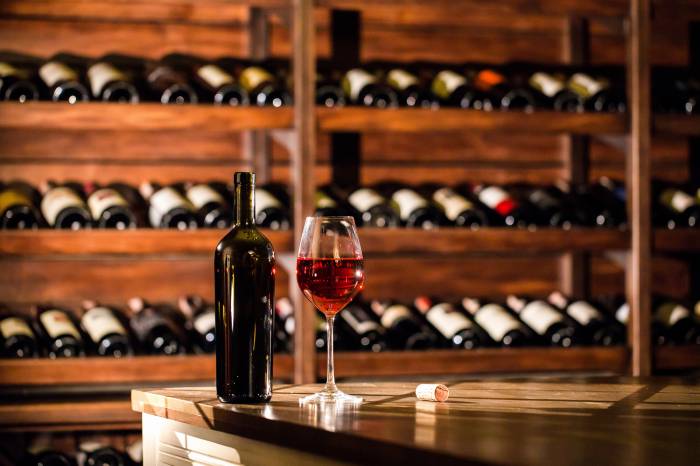U.S. Buyers Storm Back to Fine Wine, Taking 15.5% of August Trade
Trade activation rate hit 60%, the highest since January
2025-09-19

The fine wine market experienced further declines in August, according to the latest Liv-ex Market Intelligence Report released in September 2025. All major Liv-ex indices fell during the month, with the Fine Wine 100 and Fine Wine 50 each dropping by 0.4%, and the Fine Wine 1000 down by 0.3%. Despite these declines, there are early signs that stability may be returning to the market. Five of the Liv-ex sub-indices posted gains in August, led by the Rhone 100, which rose by 1.4%, and the Sauternes 50, up by 1.2%. The Italy 100 also increased for a second consecutive month, rising by 0.3%.
Champagne has emerged as a region of particular interest. The Champagne 50 index climbed by 0.7% in August and accounted for its largest share of trade since February this year. Demand for Champagne is at its highest level since April 2023, with over £2 million worth of live bids on Liv-ex. Wines from regions outside Bordeaux, Burgundy, Champagne, Italy, Rhone, and the United States made up 7.4% of total trade value in July, marking their highest proportion since August 2020.
Market activity showed mixed results compared to previous periods. Trade count increased by 0.3% and volume was up by 3.8% from July, but overall value fell by 1.2%. Compared to August last year, trade count was down by 0.9%, while volume rose sharply by 10%. However, value dropped by 9.7%, closely tracking the Fine Wine 1000’s decline of just over 10% over the past year.
US buyers have started to return to the market after a period of uncertainty over tariffs, which now appear set at 15%. American buyers accounted for a 15.5% share of purchase value in August. After seven months of falling demand, buyers triggered the highest level of trades since January, with a trade activation rate of 60%. The Liv-ex bid:offer ratio also improved to 0.16 from a low of 0.12 in July.
Among individual wines, Vega Sicilia Unico from Ribera del Duero (2015 vintage) was one of August’s top-traded wines by value, alongside Chateau Lafite Rothschild (2016), Dom Perignon (2008), Giacomo Conterno Barolo Monfortino Riserva (2019), and Chateau Pavie (2009). By volume, Domaine Tempier Rose (2024), Castelgiocondo Brunello di Montalcino (2020), and Chateau Lynch-Bages (2020) were among the most actively traded.
The report highlights Champagne as an area where prices may be consolidating above their pre-pandemic levels. While some components of the Champagne 50 index remain vulnerable, others such as Bollinger Grand Annee and Vintage Krug are finding support on long-term trendlines. Salon stands out as a particularly interesting opportunity due to its high bid:offer ratio among frequently traded Champagnes.
The supply-demand balance for Champagne is shifting. Smaller grower Champagnes like Egly-Ouriet currently have the highest bid:offer ratios but have not yet translated this into significant trade volumes. Among more frequently traded Champagnes, Salon has maintained a strong bid:offer ratio and steady prices despite recent market volatility.
Sophia Gilmour, a Liv-ex market analyst, noted that Champagne was heavily affected by US tariff threats during the Trump administration, which led to a sharp drop in demand from American buyers in early quarters of this year and swift price declines. However, this correction brought prices to more attractive levels quickly and renewed demand from UK and EU buyers has helped stabilize prices.
The Champagne 50 index remains well above its lows from 2020 and is showing signs of reduced volatility and strong trade volumes as broader market conditions begin to stabilize. Price movements suggest that a return to those lower levels is unlikely; instead, consolidation at higher levels appears more probable.
Within the Champagne category, brands like Bollinger Grand Annee have seen sustainable price increases over the past year while Krug has recently rebounded on its long-term trendline despite being one of the more volatile indices. For those seeking safer opportunities with healthy supply-demand dynamics and higher trade volumes, Salon presents an appealing option.
Recent trading patterns for Salon show that price declines have eased since mid-2024 and some vintages are already seeing evidence of price consolidation supported by decent trade levels. The current technical indicators suggest that prices may have reached a consolidation point with decreasing volatility and resistance at key moving averages.
Overall, while blue-chip Bordeaux and red Burgundy continue to face challenges in attracting immediate buyers, Champagne’s unique position as both an investment asset and a wine for immediate consumption makes it increasingly attractive in today’s market environment. With climate change posing risks to future production quality in Champagne, current vintages may offer compelling value for collectors and investors alike as prices stabilize at higher levels than seen in recent years.
Founded in 2007, Vinetur® is a registered trademark of VGSC S.L. with a long history in the wine industry.
VGSC, S.L. with VAT number B70255591 is a spanish company legally registered in the Commercial Register of the city of Santiago de Compostela, with registration number: Bulletin 181, Reference 356049 in Volume 13, Page 107, Section 6, Sheet 45028, Entry 2.
Email: [email protected]
Headquarters and offices located in Vilagarcia de Arousa, Spain.